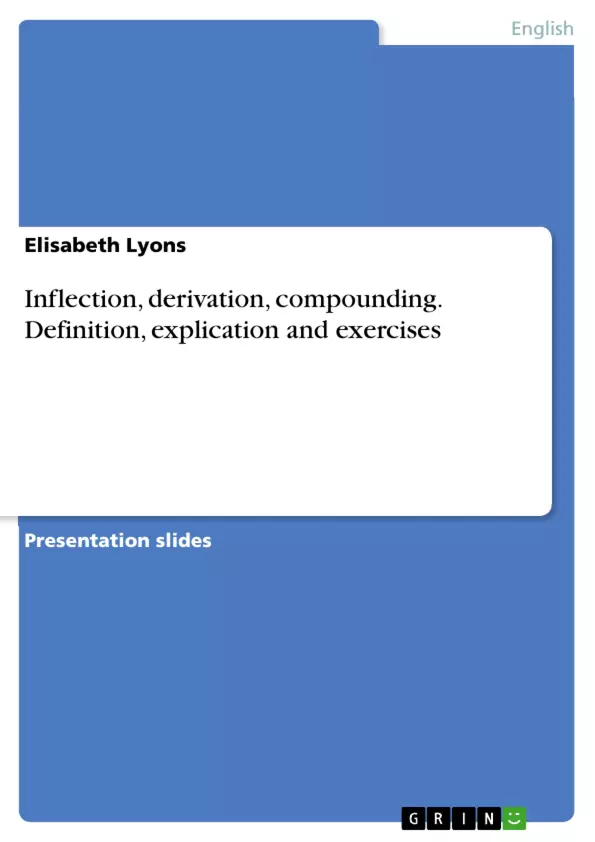This presentation about inflection, derivation and compounding answers following question: Which linguistics discipline do these terms belong to?
Inhaltsverzeichnis (Table of Contents)
- Inflection
- Derivation
- Compounding
Zielsetzung und Themenschwerpunkte (Objectives and Key Themes)
This document provides an introduction to the three major branches of morphology: inflection, derivation, and compounding. It defines each term and explains its role in word formation and grammatical function.
- Inflection: The process of adding affixes to words to mark grammatical functions, such as tense, number, and case.
- Derivation: The process of creating new words from existing ones by adding affixes, often changing the word class.
- Compounding: The process of combining two or more words to form a new word with a new meaning.
- Word formation: The creation of new words in a language.
- Morphology: The study of the structure of words and how they are formed.
Zusammenfassung der Kapitel (Chapter Summaries)
Inflection
This section defines inflection and explains its role in grammatical function. It provides examples of inflectional affixes in English, including -s, -ed, -er, -ing, and -est.
Derivation
This section defines derivation and explains how it creates new words from existing ones by adding affixes. It discusses the potential for changing word class through derivation.
Compounding
This section defines compounding and explains how it creates new words by combining two or more existing words.
Schlüsselwörter (Keywords)
Key terms and concepts covered in this document include inflection, derivation, compounding, morphology, word formation, grammatical function, affixation, and word class.
- Citar trabajo
- Elisabeth Lyons (Autor), 2013, Inflection, derivation, compounding. Definition, explication and exercises, Múnich, GRIN Verlag, https://www.grin.com/document/496686



